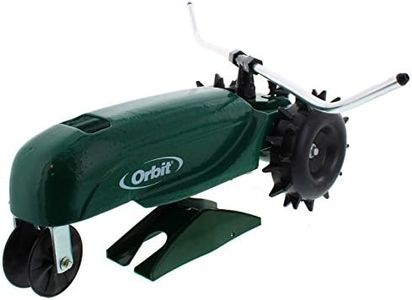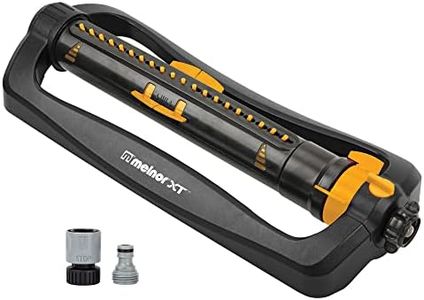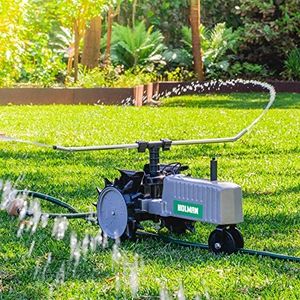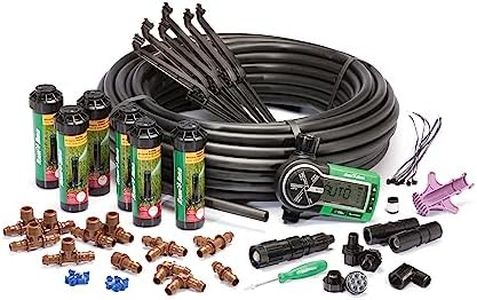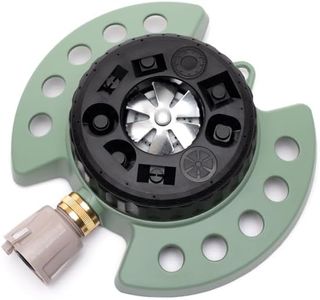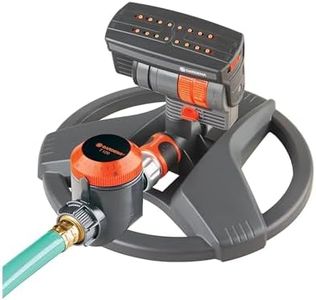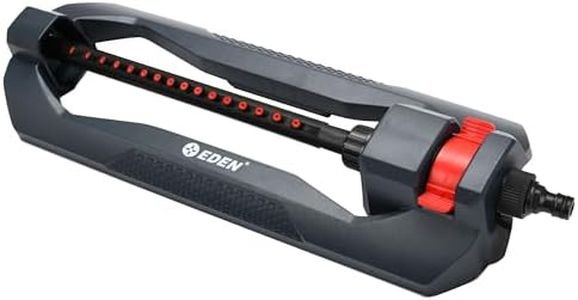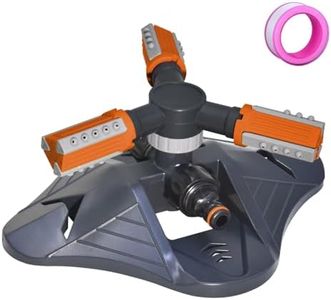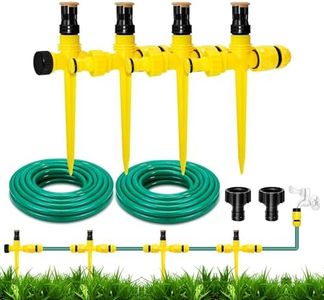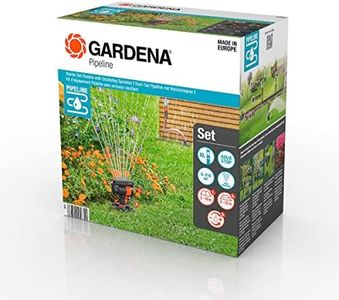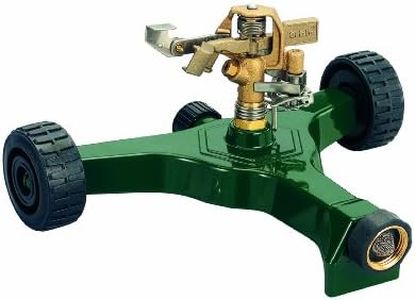We Use CookiesWe use cookies to enhance the security, performance,
functionality and for analytical and promotional activities. By continuing to browse this site you
are agreeing to our privacy policy
10 Best Garden Sprinklers
From leading brands and best sellers available on the web.Buying Guide for the Best Garden Sprinklers
Choosing the right garden sprinkler can make a big difference for the health and appearance of your lawn and plants. With the various types and features available, it's important to think about your garden's size, shape, and the particular watering needs you have. By understanding the key specifications, you'll be able to pick a sprinkler that efficiently delivers water where it's needed most, avoids waste, and saves you time. Consider where and how you plan to use the sprinkler, and let your garden's layout guide your decisions.Spray PatternThe spray pattern refers to the shape and direction in which the sprinkler distributes water. This is important because different garden layouts require different coverage. Common patterns include circular, rectangular, oscillating (back and forth), and adjustable patterns. Smaller or irregularly shaped gardens may benefit from an adjustable or focused pattern, while large rectangular lawns might suit an oscillating or rectangular spray. Observing your garden's shape will help you choose a sprinkler that covers your area evenly without watering sidewalks or driveways.
Coverage AreaCoverage area tells you how much ground a sprinkler can water at once, usually measured in square feet or meters. It's an important spec because an undersized sprinkler won't cover your whole space, while an oversized one may waste water. Sprinklers vary from those that cover small areas (great for flower beds) to large ones that can reach across big yards. You should measure your garden and look for a sprinkler that matches or slightly exceeds your space, ensuring even coverage with as few moves as possible.
Water Pressure RequirementsEvery sprinkler needs a certain water pressure (measured in PSI or bar) to work effectively. This is important because your home's water supply might be stronger or weaker than average, which can affect sprinkler performance. Lower-pressure systems suit small, gentle sprinklers, while higher-pressure ones can power models that spray farther. You should check your outdoor tap's pressure and choose a sprinkler that fits, ensuring it works well without damaging your plants or wasting water.
AdjustabilityAdjustability refers to how much you can control the sprinkler’s water flow, direction, and pattern. This matters because it lets you fine-tune the sprinkler for different sections of your garden or changing weather conditions. Some sprinklers let you adjust the width, rotation, and distance, while others offer fixed settings. If you want flexibility to water different parts of your garden or to avoid certain areas, look for high adjustability, while those with simple layouts can choose straightforward fixed models.
Material and DurabilityThe materials used in a sprinkler affect how long it will last and how well it stands up to regular use and weather. Most sprinklers are made from plastic, metal, or a mix of both. Metal models are typically sturdier and last longer, while plastic ones are lightweight and resistant to rust. If your sprinkler will be outside often or you plan to use it heavily, durability is especially important. Choose a material that matches how much wear and tear you expect in your garden.
Ease of Movement and PlacementSome sprinklers are light and easy to move, while others are designed to stay in one spot or are heavier for stability. This spec is important if you need to water several areas or want to store the sprinkler away when not in use. If portability matters, look for a lightweight or wheeled option, while those who want a set-and-forget approach might prefer a sturdy, stationary model. Your watering routine and garden layout will help you pick the right balance.
